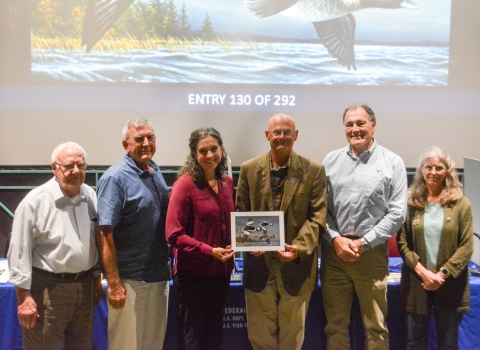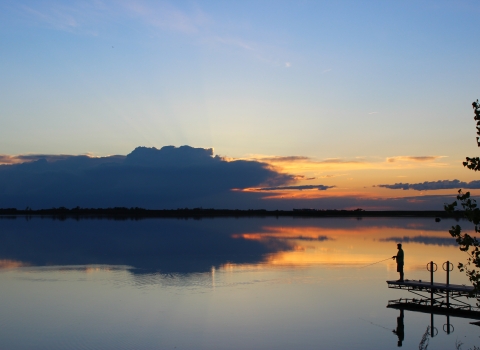CORVALLIS, Oregon – The U.S. Fish and Wildlife Service is accepting public comments on a plan to protect key conservation areas in the middle and southern sections of the Willamette Valley. The plan encompasses habitat for 10 species listed under the Endangered Species Act including the Fender’s blue butterfly, as well as iconic species such as Western monarch butterflies and the Oregon white oak.
This effort supports the Willamette Valley Oak and Prairie Cooperative’s vision and the long-running Oregon Conservation Strategy developed by the Oregon Department of Fish and Wildlife.
The land protection plan would establish the footprint for the Willamette Valley Conservation Area. With a priority on existing oak and prairie habitat, the plan would allow the Service to work with willing landowners within the footprint to preserve areas of high conservation value. It is the policy of the Service to acquire land or interests in land only from willing sellers.
Taking action soon is particularly important in the rapidly growing Willamette Valley. The population of the Willamette Valley already exceeds 2.5 million people, and is projected to double over the next 40 years. That looming population growth means conservation planning needs to happen before important parcels of habitat are developed.
“The land protection plan is both timely and relevant to addressing the urgent threats facing the oak and prairie ecosystems of the Willamette Valley,” the Confederated Tribes of Grand Ronde wrote in a letter of support. “It is hard to overstate how significant this kind of investment in land protection would be to the overall recovery, long-term health and resilience of this region.”
Hugh Morrison, acting Regional Director for the Service’s Pacific Region, said: “Now is the optimal time to take a comprehensive approach to resolving current and anticipated conservation challenges in the Willamette Valley. We’re grateful to have the support of the Confederated Tribes of Grand Ronde, state and local agencies, and non-governmental organizations in this conservation effort. We look forward to hearing from the public as a part of this process as we develop the Willamette Valley Conservation Area.”
The Service is proposing to use the Willamette Valley Oak and Prairie Cooperative’s Primary Planning Area as its acquisition boundary. The cooperative’s 30-year conservation map identifies core conservation areas and opportunity-based conservation areas. Acquisitions will also focus on and address the habitat objectives of the Service’s Willamette Valley Conservation Study completed in 2017.
The study area includes habitat for 10 species listed under the Endangered Species Act, two candidate species, and numerous other plant and animal species of concern. The plan will also provide benefits for migratory waterfowl, shorebirds, neotropical songbirds, and iconic Oregon species such as Western monarch butterflies, Western meadowlark, and Oregon white oak.
“The restoration and management of native habitats could contribute to the recovery of listed species and help preclude the need for future plant and animal listings under the Endangered Species Act,” said Damien Miller, refuge supervisor for the complex. “Through this process we will assess the predicted impacts of climate change climate change
Climate change includes both global warming driven by human-induced emissions of greenhouse gases and the resulting large-scale shifts in weather patterns. Though there have been previous periods of climatic change, since the mid-20th century humans have had an unprecedented impact on Earth's climate system and caused change on a global scale.
Learn more about climate change on Willamette Valley species and develop conservation strategies that reflect this need. This long-term strategic plan will help ensure that iconic Willamette Valley species will persist into the future.”
The Service published the Draft Land Protection Plan, Conceptual Management Plan and Environmental Assessment, and the public comment period is open through December 18. The plans are available at www.fws.gov/refuge/william-l-finley. The public can provide comments on the plan via email at willamettevalley@fws.gov or via mail at Willamette Valley NWRC LPP, 26208 Finley Refuge Road, Corvallis, OR 97333.
The Service will review public comments and use them to inform the development of the final plans.
###
The U.S. Fish and Wildlife Service works with others to conserve, protect and enhance fish, wildlife, plants and their habitats for the continuing benefit of the American people. For more information, visit https://www.fws.gov/about/region/pacific and connect with us on social media: Facebook, Instagram, Twitter, LinkedIn, Flickr, and YouTube.



